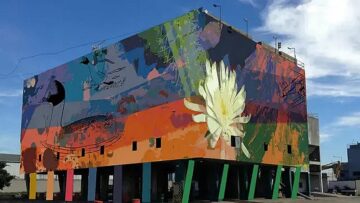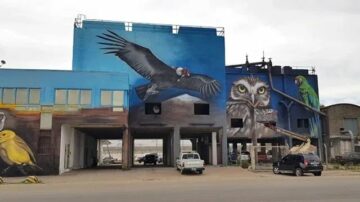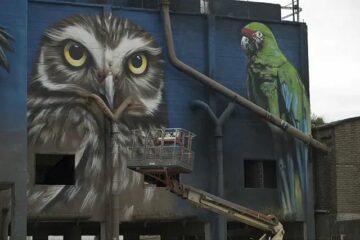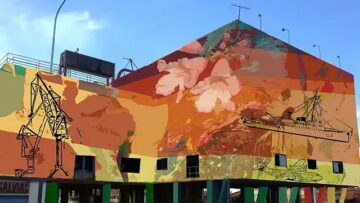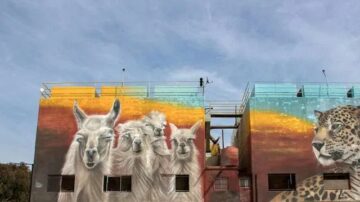Challenge(s)
How can the port authority highlight infrastructure with artistic interventions to improve its integration and visibility?
Good practice
Showcase exteriors, features and spaces
The architectural design of public spaces, buildings and port infrastructure, whether they are new constructions or existing ones, can leverage light, colour, and materials as crucial components. These elements play a significant role in transforming the often-negative industrial perception associated with port cities. By creatively using these elements, such as in Dock F of Buenos Aires, where the old sand silos have been refurbished with artistic interventions to provide a new image for the port, the citizens can enjoy their port heritage through a new creative light.
This good practice also includes objective 6.2 (Integrating spaces and functions open to residents and visitors alike into port facilities, enhancing the visibility of the port and its activities) of the AIVP's 2030 Agenda.
Case study
In 2017, the port authorities, in collaboration with municipal authorities, embarked on a transformation project for the primarily abandoned area around Dock F. It was decided that this area, which houses ten sand silos crucial for distributing 50% of the city’s construction sand, should also be turned into a promenade.
This transformation aimed to maintain the “sand port” functionality while enhancing its aesthetics to make the area more attractive for the general public. One significant environmental benefit from this redevelopment project was the reduced road traffic by shipping sand via boats instead of trucks, each boat replacing ten trucks.
The project involved removing rusting boats and improving the network of roads and pathways, including pedestrian routes. Urban artists were employed to give visibility to older port infrastructure, converting them from the dark grey, brownish sand silos into structures decorated with multicoloured murals. Three main themes guided these large murals:
· The local flora and fauna.
· The vibrant colours represent Argentina’s regions (Patagonia, Pampas, North, Mesopotamia).
· The heritage of Dock F includes shipwrecks and seaplanes dating back to the early 1960s.
Eight artists contributed to these vibrant frescoes, which now greet visitors as they stroll among depictions of Argentine wildlife, including llamas, hummingbirds, condors, macaws, jaguars, and more. Further work is planned to complete the regeneration project, including adding green spaces and lighting. The costs of the murals were covered by the silo owners, with the port financing the pavement and pedestrian pathways.
This initiative revitalised a once neglected and deteriorated area and transformed it into an attractive space for the public to enjoy. It’s a testament to the power of art and urban renewal, bringing vibrancy and culture to a previously overlooked city corner.
Additional information
Murales porteños. La fauna autóctona cobra vida en los silos (Spanish) (translation: Buenos Aires murals. Native fauna comes to life in the silos)
El nuevo Puerto de Buenos Aires: la historia de un emblema de la ciudad que pasó del gris al color y los murals (Spanish) (translation: The new Port of Buenos Aires: the history of an emblem of the city that went from gray to color and murals)

